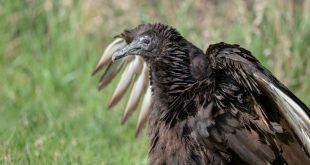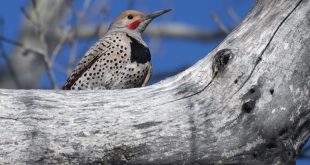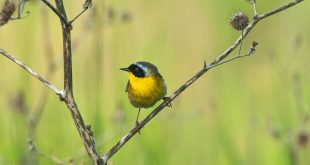This past Friday (31 August), the Nebraska Game and Parks Commission met in Burwell and one of the business items on the agenda was adding two species to the state list of threatened and endangered species. One of those species was the long-eared bat, which is not a bird and therefore I am not qualified to discuss. The other species was a bird called the Red Knot. Since I have received a couple questions wondering why a bird many people in Nebraska have never heard of, let alone seen, was being listed, I concluded this venue was a good place to provide some details and explanation. So here we go….
What is a Red Knot?: The Red Knot is a sandpiper, it is one of the largest members of the genus Calidris. It is a long-distance migrant. Populations in North America breed in the Arctic and winter along the southern Atlantic and Gulf Coasts south to the tip of South America. The rufa Red Knot (Calidris canutus rufa) is the subspecies which occurs in eastern North America and migrates primarily along the Atlantic Coast. A large proportion of the rufa Red Knot population stops-over in Delaware Bay during spring migration where they feed on horseshoe crab eggs. Smaller numbers winter along the Texas Coast and migrate through the Interior of North America. A different subspecies, Calidris canutus roselaari, breeds in Alaska and four other subspecies occur in the Old World (a great map showing subspecific distributions can be found here).
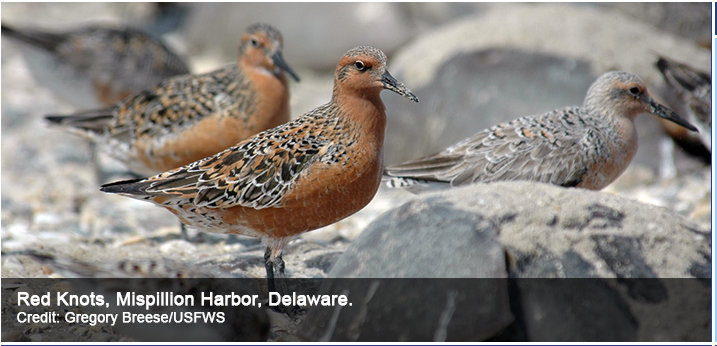
Do Red Knots occur in Nebraska? Yeah, kinda. Red Knots are casual spring and fall migrants in the state. Meaning there is more than one record but they do not occur every year and they also do not occur in large numbers. There are a total of 28 documented sightings for the period of record, which goes back more than a century. Birds were observed for more than one day in only one instance. This is not unexpected since Red Knots migrate quickly from wintering habitats to breeding sites and vice versa. The most recent documented sighting was in 2011 in Knox County. Red Knots have been sighted more often at Lake McConaughy (8 records total) than any other site in Nebraska. The largest number of Red Knots sighted in Nebraska was a flock of 27 at Ayr Lake in Adams County seen by yours truly. Below, is a map showing the spatial distribution of Red Knot records in our state.
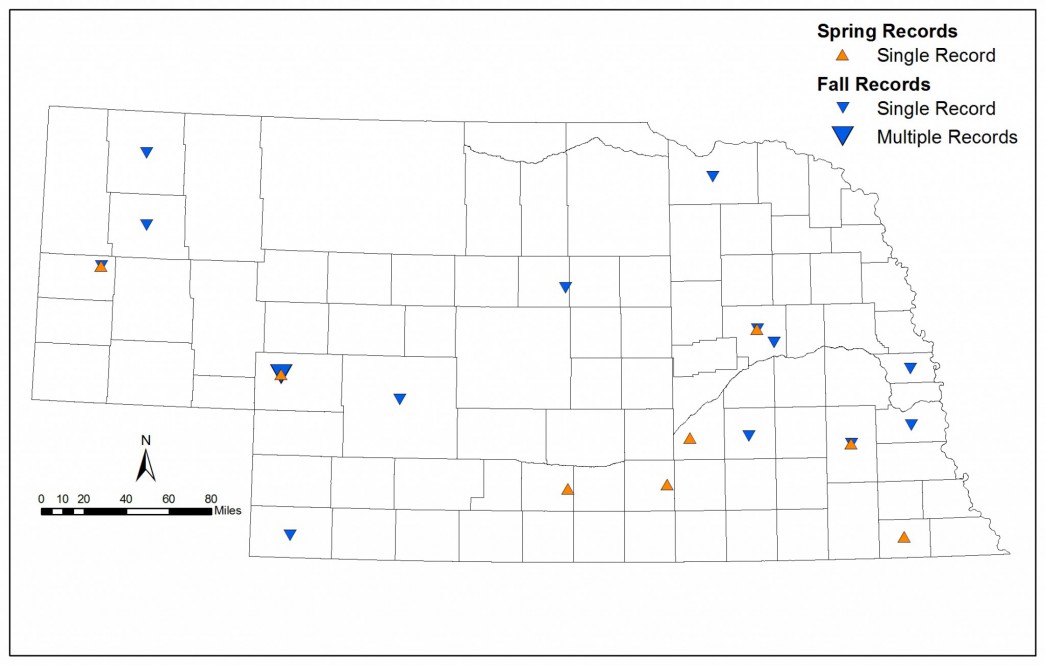
Why did the Nebraska Game and Parks Commission choose to add the Red Knot to the Nebraska list of threatened and endangered species? Excellent question and this is where it becomes a little bit complex. First, it is important to recognize the state of Nebraska has its own state endangered species law called the Nebraska Nongame and Endangered Species Conservation Act, sometime referred to as NESCA, which complements the federal Endangered Species Act. Under § 37-806 (1) of the state statute it reads
“Any species of wildlife or wild plants determined to be an endangered species pursuant to the Endangered Species Act shall be an endangered species under the Nongame and Endangered Species Conservation Act, and any species of wildlife or wild plants determined to be a threatened species pursuant to the Endangered Species Act shall be a threatened species under the Nongame and Endangered Species Conservation Act.”
Back on 9 December 2014, the U.S. Fish and Wildlife Service listed the rufa Red Knot as a threatened species. This Red Knot population has undergone population declines in recent decades and it is indeed in trouble. One of the causes of the population decline is reduction of horseshoe crabs, and thus horseshoe crab eggs, at that one key stopover site, Delaware Bay. Even though Red Knots rarely occur in Nebraska, our state was included as part of the species geographic range as defined by the U.S. Fish and Wildlife Service. Certainly this decision can be questioned. Nevertheless, once the species was federally listed and Nebraska was included in the geographic range, the Red Knot was destined to be on the Nebraska list of threatened and endangered species.
What are the implications of listing the Red Knot in Nebraska? It is difficult to say, for certain. However, Red Knot rarely occur in the state and there are no major stopover sites known at this time. Furthermore, habitats (lake shorelines and mudflats) are also used by the Piping Plover, a species that has been listed as threatened for about thirty years. Thus, there is a level of redundancy with the listing of the Red Knot.
Are there other species similar to a Red Knot that occur in Nebraska? This is another good question. Now that the Red Knot’s profile has been elevated, people may be more likely to notice them if they are lucky enough to see one. However, observers are much more likely to see common species that are similar in appearance to the Red Knot. For example, both Long-billed and Short-billed Dowitcher are sandpipers with long bills and in breeding plumage have reddish underparts. Photos provided below of dowitchers can be compared to the photo of a Red Knot, above. Any one person is unlikely to encounter a Red Knot in Nebraska. During my thirty years of birding in the state, I have observed the species three times.
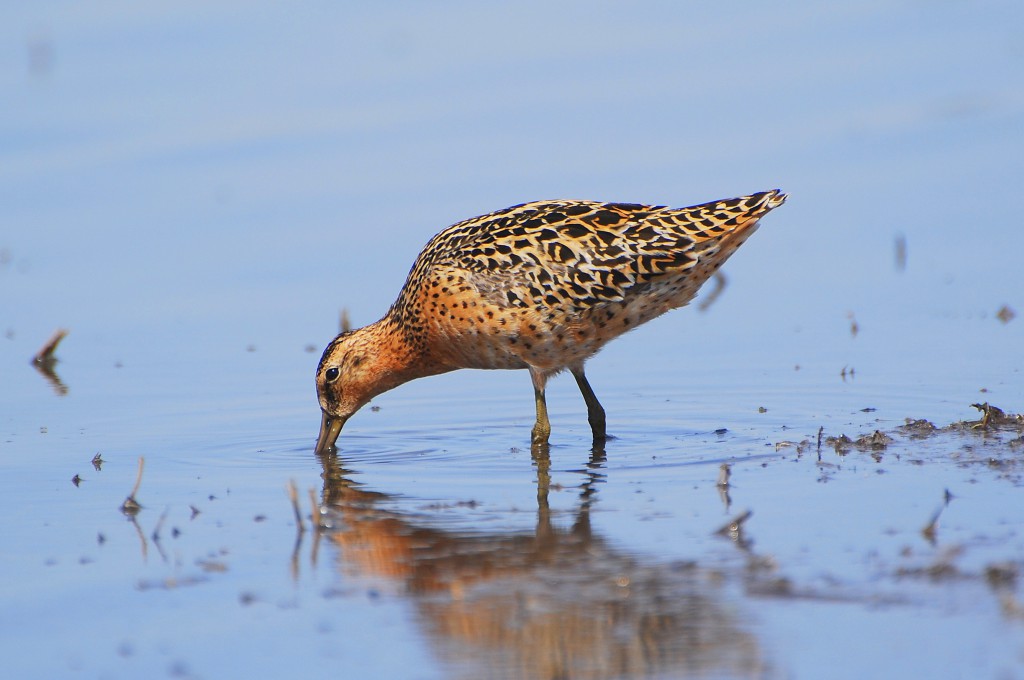
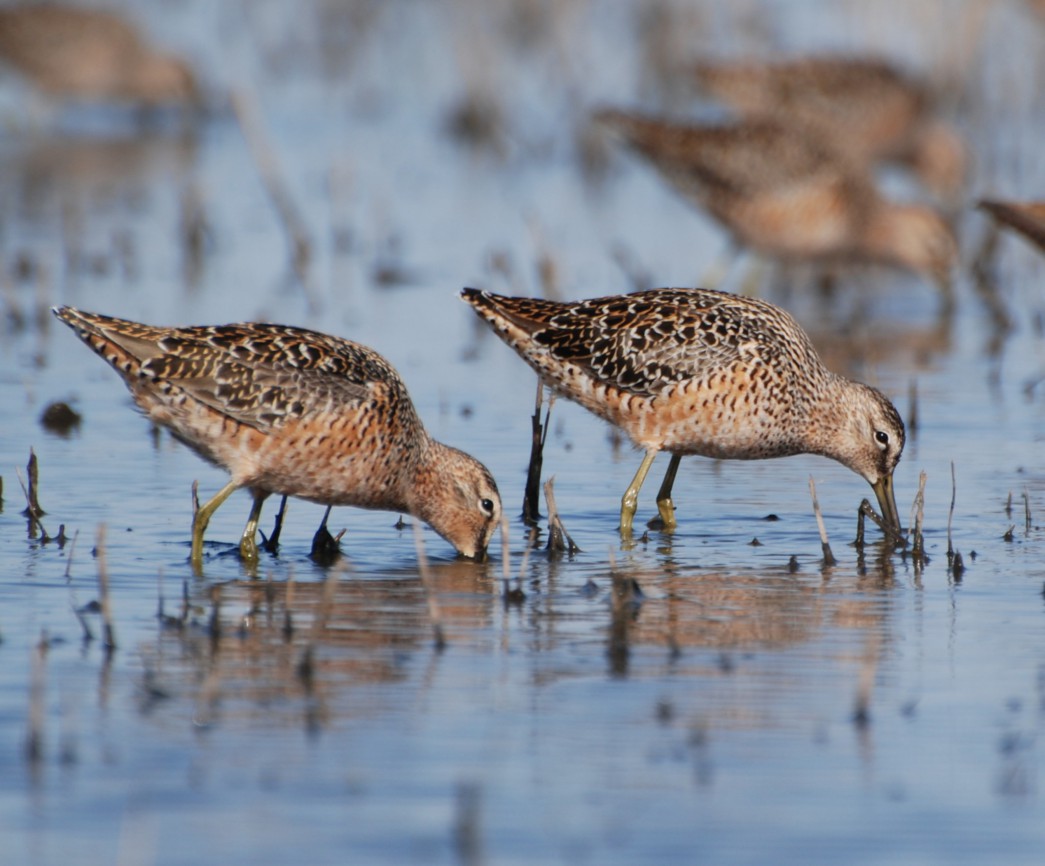
So this is a quick overview of the Red Knot in Nebraska in wake of it being added to the Nebraska list of threatened and endangered species. More information about Red Knots can be found in the video, below.
Good birding!
 Nebraskaland Magazine
Nebraskaland Magazine

